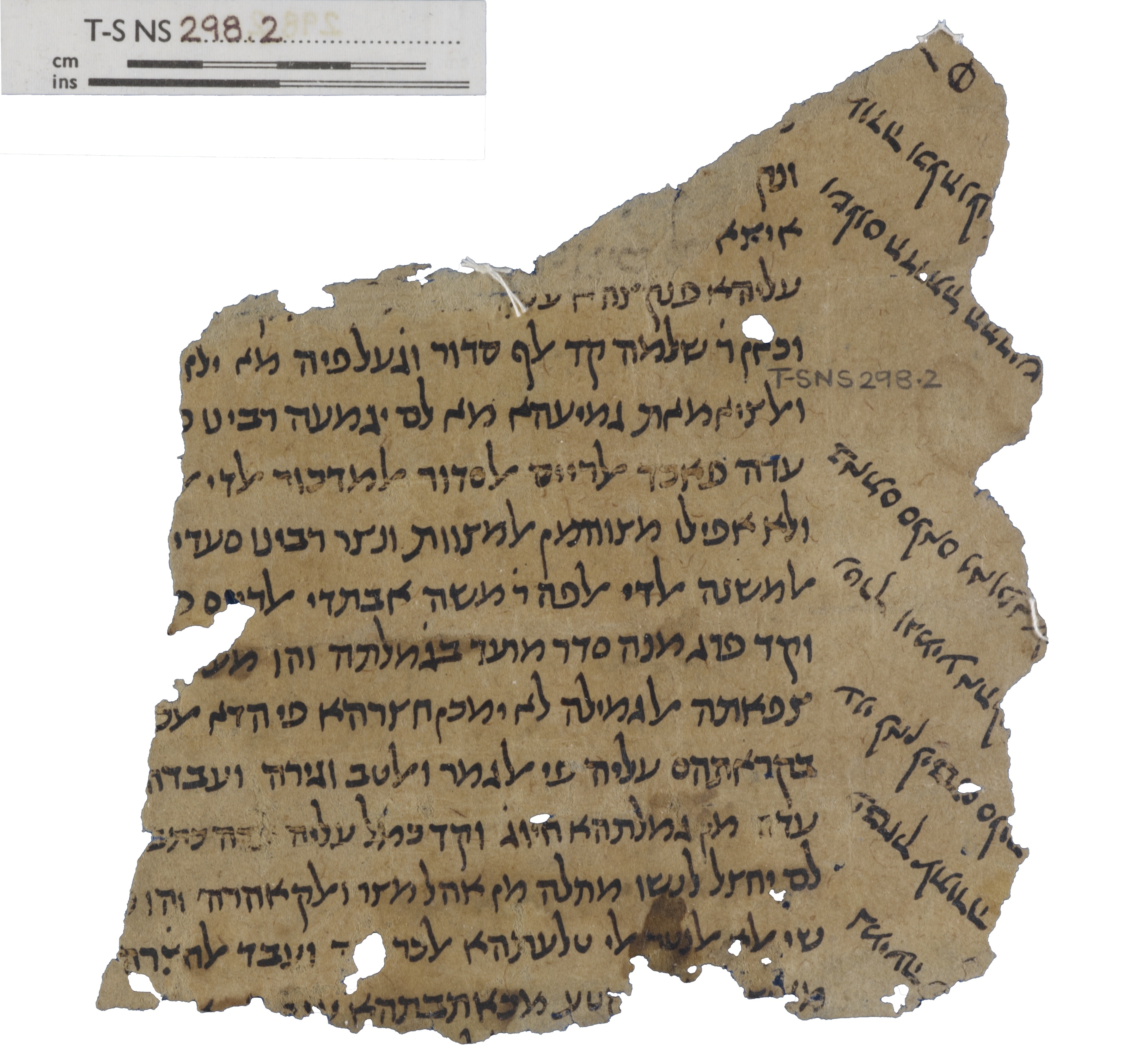Q&A Wednesday: Ben Outhwaite on managing the GRU in a time of Covid

So, Ben what are you working on today?
Well, life’s pretty varied at the moment. The GRU has a number of projects on the go, and so I’m spending quite a lot of time happily immersed in manuscripts (or, at least, their digital surrogates, since I am still working from home) in a way that I haven’t had the opportunity to for about the last 15 years, since I was a full-time researcher myself. At any one time, I may be describing documentary fragments from the T-S New Series, checking descriptions produced by other GRU researchers, enriching the TEI of descriptions with references to geographical authority files, editing book manuscripts for the Cambridge Genizah Series or translating Classical Arabic or Judaeo-Arabic poems — I’m definitely not not enjoying myself.
It sounds like you've been living your best life. How has the pandemic affected work in the GRU?
Working remotely hasn’t been too much of a stumbling block: we have digitised practically all of the Cambridge Genizah Collections, and I’ve built up a good library of Genizah works at home. The flourishing of Zoom has meant that I’ve been doing more teaching and lecturing – remotely – than ever before, and the GRU’s early adoption of the messaging environment Slack (which we’ve been using since at least 2016) means that we’re all able to communicate as easily as if in the office – asking for help about tricky manuscript readings or showing-off new discoveries simply by dragging-and-dropping: the pandemic has not curtailed our collaboration.
Have there been challenges?
We’ve had researchers off sick with Covid, or stranded abroad due to Covid-cancelled flights and consequently forbidden to work (due to post-Brexit lack of reciprocal tax arrangements). It’s been an entirely new set of challenges over the last year, but the research team has not been fazed at all. The pandemic has greatly dampened the UL’s rather irritating culture of meetings, so that’s been a definite spur to productivity.
And what are you doing right now?
Today (Wednesday) would normally be an Arabic poetry day: I’m working with Dr Mohamed Ahmed of Trinity College Dublin on his ERC-funded project to translate and contextualise the Arabic and Judaeo-Arabic poetry in the Genizah Collection. This project is a real treat: translating Classical and Medieval Arabic poems, but it’s a steep learning curve. My evenings are mostly spent – when not enriching TEI descriptions with alternate spellings of personal names – improving my literary Arabic and studying Classical Arabic prosody. However, we’re interviewing for two researcher posts on this project all day tomorrow, so I’m mainly doing descriptions of the T-S New Series documentary fragments for a GRU project, funded by a generous UK-based grant-giving foundation for Jewish academic causes.
And what are you finding?
There are masses of interesting, though often rather fragmentary, documents in the New Series, including a large number of Arabic-script items. For these, we have two excellent young Arabists working part-time in the GRU, Dr Nick Posegay and Dr Magdalen Connolly. Nick just completed a superb PhD on the history of Hebrew, Syriac and Arabic grammatical thought, and he’s just won a prestigious Leverhulme post-doctoral grant. Magdalen also has a Leverhulme project of her own, but for the GRU she is describing Arabic-script fragments. I was checking through Magdalen’s recent batch of descriptions yesterday, and she’s found a hugely disparate collection of material, from lists of charitable donations, through to medical notes on irregular bowel movements, and up to documents relating to the administration of iqṭāʿs – the semi-feudal granting of land to the deserving or the well-connected by the Islamic government: a very characteristic mechanism of medieval Islamic rule. My own descriptions encompass Hebrew, Aramaic and Judaeo-Arabic material in the ‘miscellaneous’ and ‘JA documents’ folders of the New Series.
Does anything in particular stand out?
There are obviously a huge number of documents relating to marriage, as ketubbot in particular tend to be preserved by their owners. Yesterday, I found a cache of three together, one of which (T-S NS 320.64a) – though really badly effaced by the ravages of time – can be dated ‘[one thousand] seven hundred and seventy of the Seleucid Era’, which equates to 1458-1459 CE, so putting it in that quieter period of Genizah history when we really don’t seem to have a lot of material preserved. In addition, I’ve found some great little bits of correspondence whose significance was not realised by earlier cataloguers. T-S NS 298.2, for instance, which is a letter in Judaeo-Arabic discussing the liturgy, specifically the different siddurim of R. Solomon (who must be Solomon b. Nathan of Sijilmassa), the seder moʿed included in the Mišne of R. Moses (Moses Maimonides), and that of Rabbenu Saʿadya (Gaʾon). The writer points out that no one from the communities of Fusṭāṭ or Cairo (מן אהל מצר ואלקאהרה) has produced anything like it – he’s complaining about a lack of native talent among the Egyptian Jews (since Maimonides was a Spaniard and Saʿadya, despite being born in Egypt, was evidently viewed as an Iraqi). He refers to Maimonides as אלרייס (al-Rayyis, ‘the Head’)– so he is still alive then and probably in the earlier period of his time in Egypt – and says that the Rambam has been teaching אלגמר ואלטב, ‘talmud and medicine’. I’ll admit that I had no idea what אלגמר was, and I wasted some time in Arabic dictionaries trying to make sense of it, before I dropped the fragment into Slack, and, from his home in Timorim (where he was probably barbecuing at the time), Dr Amir Ashur pointed out that it was obviously a loan-word – gemara. The Genizah is a continual learning experience, even after nearly 30 years of working on the manuscripts.
Thanks very much Ben, here's to another 30! Hopefully some of them will be spent looking at manuscripts in person once more.

Add new comment